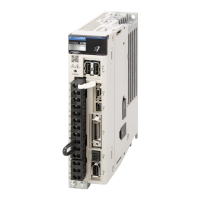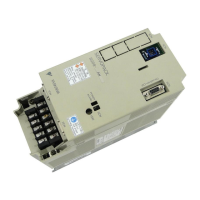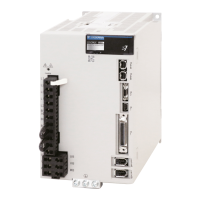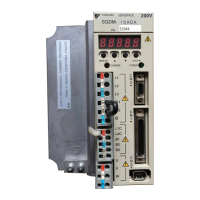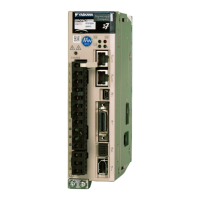8.4 Phase Control
8.4.1 Machine Configuration
8-12
8.4
Phase Control
This section gives an example of programming an electronic shaft to replace the physical shaft
of a mechanical line shaft.
8.4.1
Machine Configuration
In this example, the line drive motor of a mechanical line shaft is replaced with a virtual axis
using the SVR Function Module. The sectional drive axes (i.e., two axes of the SVC Function
Module) are synchronized with the virtual axis in SVR Function Module.
The advantage of an electronic shaft is that by having no drive system (i.e., no gear), the varia-
tions in mechanical precision that occur in drive systems are eliminated, which allows the
machine to operate with greater accuracy. The need for drive system maintenance is also elim-
inated. This continuous multi-axis synchronized control is implemented with phase control
using the PHASE motion command. Motion programs are designed to perform positioning and
cannot be used for this kind of control.
This example uses operational patterns like those shown in the following figures.
This section describes the basic programming necessary to move the machine. The example in
this section does not include interlocks or other elements that must be included for an actual sys-
tem.
Servo-
motor
Servo-
motor
Roll No. 2Roll No. 1
Electronic Shaft Control System (Phase Control)Line Shaft Drive System
Roll No. 2Roll No. 1
Line drive motor
The virtual axis (SVR) is moved with the VELO
(Issue Speed Reference) command.
Axis Y (The second axis of the SVC.)
Speed
Time
Axis X (The rst axis of the SVC.)
Speed
Time
Virtual axis (SVR)
Time
Speed
The feedback position of the virtual axis (SVC) is copied
to the position references for both axes, and synchro-
nized operation of the two axes is performed with the
PHASE command.
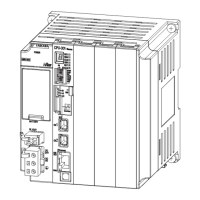
